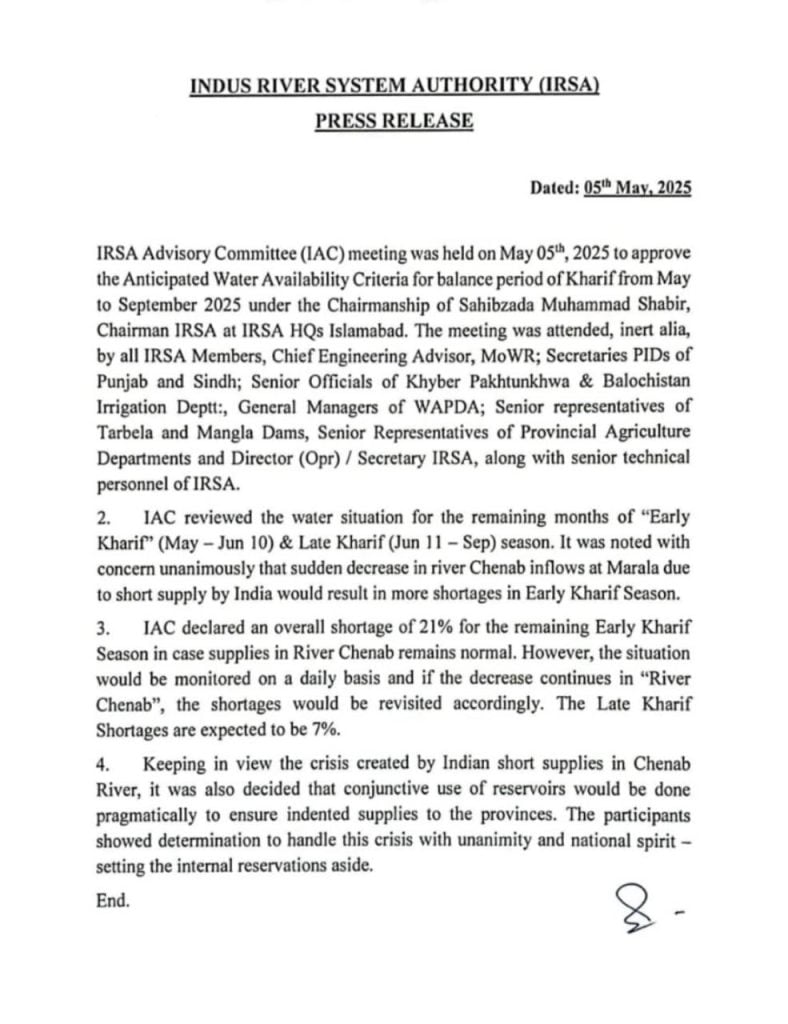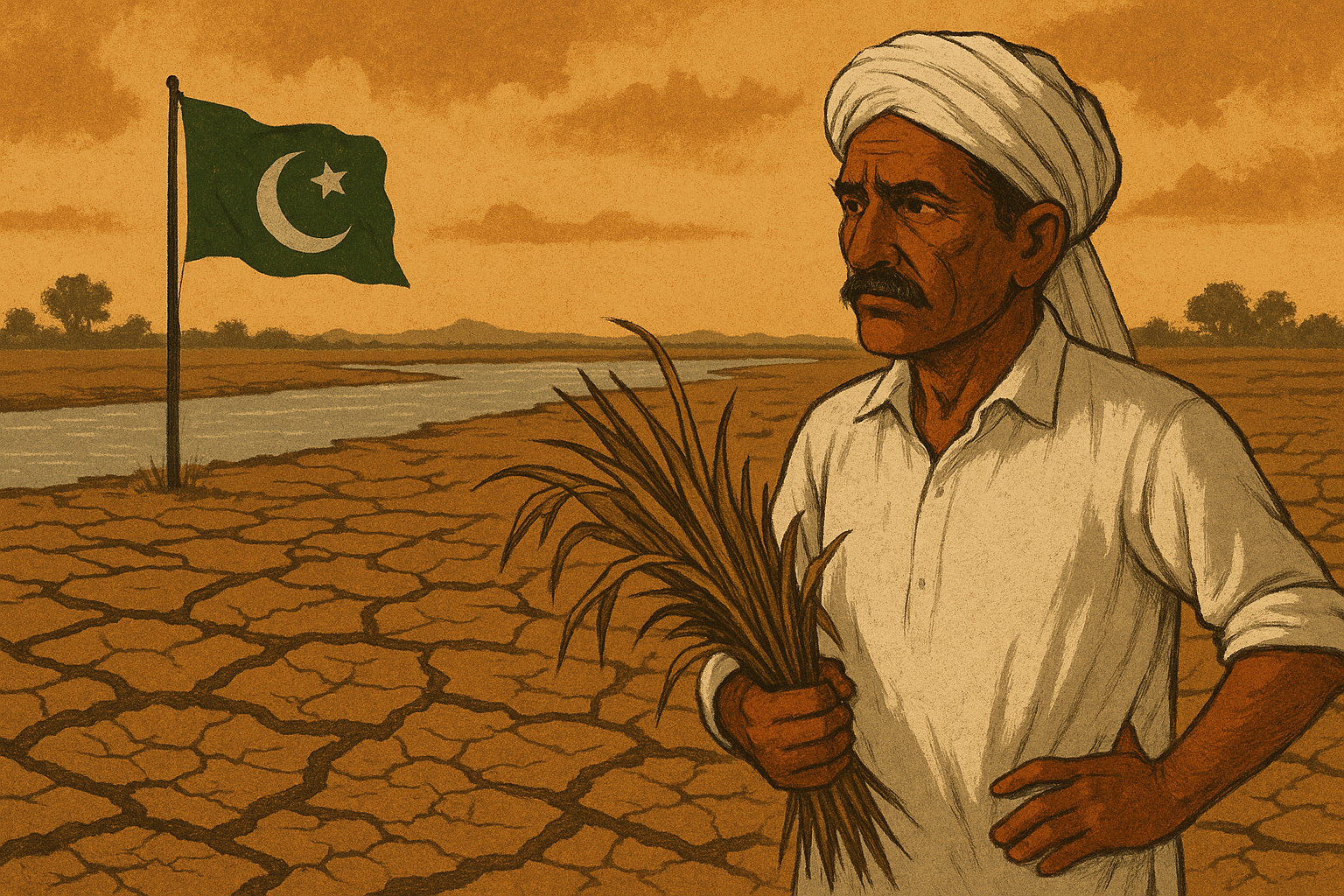Pakistan’s Indus River System Authority (IRSA) has sounded the alarm over a sharp 21% decline in the Chenab River’s water inflow, attributing the shortfall to actions taken by India. The reduced water flow, recorded as of early 2025, threatens to severely disrupt the Kharif crop season, which begins in June and includes vital, water-dependent crops such as rice, cotton, and sugarcane.
In a statement issued on Monday, IRSA reported that the advisory committee, chaired by Zahid Hussain Junejo and comprising representatives from all provinces, had initially forecast potential water stress during its September 25, 2024, meeting. The committee noted a marked reduction in Chenab inflows starting January 11, 2025. The shortfall, occurring during the early stages of crop planning and sowing, could result in significant losses to Pakistan’s agricultural sector, which remains heavily dependent on irrigation from the Indus River system.
The Chenab River is one of the three Western Rivers granted to Pakistan under the Indus Waters Treaty (IWT) of 1960, a water-sharing agreement brokered by the World Bank. While India holds control over the Eastern Rivers — Ravi, Beas, and Sutlej — it is obligated to allow unimpeded flow of the Western Rivers to Pakistan. However, Pakistan has repeatedly accused India of undermining this agreement by building infrastructure such as dams and diversion tunnels that allegedly restrict or alter natural water flow.

Among the projects raising concerns in Pakistan is India’s Shahpurkandi Dam, completed in 2024 on the Ravi River. Although the dam lies on an Eastern River, its cumulative impact, alongside other Indian projects on the Chenab, has triggered suspicions of strategic water manipulation. Pakistan has taken up the matter with the World Bank, but concrete resolutions remain elusive.
IRSA’s statement emphasized the urgency of intra-national cooperation, urging Pakistan’s provinces to set aside political differences and coordinate efforts to manage the crisis. With the late Kharif season being critical for food production and economic stability, prolonged water shortages could worsen Pakistan’s already precarious food security outlook.
The crisis comes amid a broader backdrop of regional climate instability, reduced snowmelt, and erratic monsoons. Analysts from institutions like the Stimson Center have pointed out that, alongside external threats, Pakistan faces internal policy hurdles — including elite capture of water resources, inefficient irrigation practices, and stalled dam projects like Kalabagh.
Proposals for cooperative water management — such as diverting surplus Chenab waters to Eastern Rivers in return for managed flow into Pakistan — have yet to materialize. Meanwhile, Pakistan continues to invest in storage infrastructure like the Diamer-Bhasha Dam, though progress remains slow due to political and financial constraints.
As tensions over water intensify, the current Chenab River inflow crisis serves as a stark reminder of the fragility of Indo-Pak water diplomacy and the need for renewed dialogue and adherence to the Indus Waters Treaty to ensure long-term regional stability.













